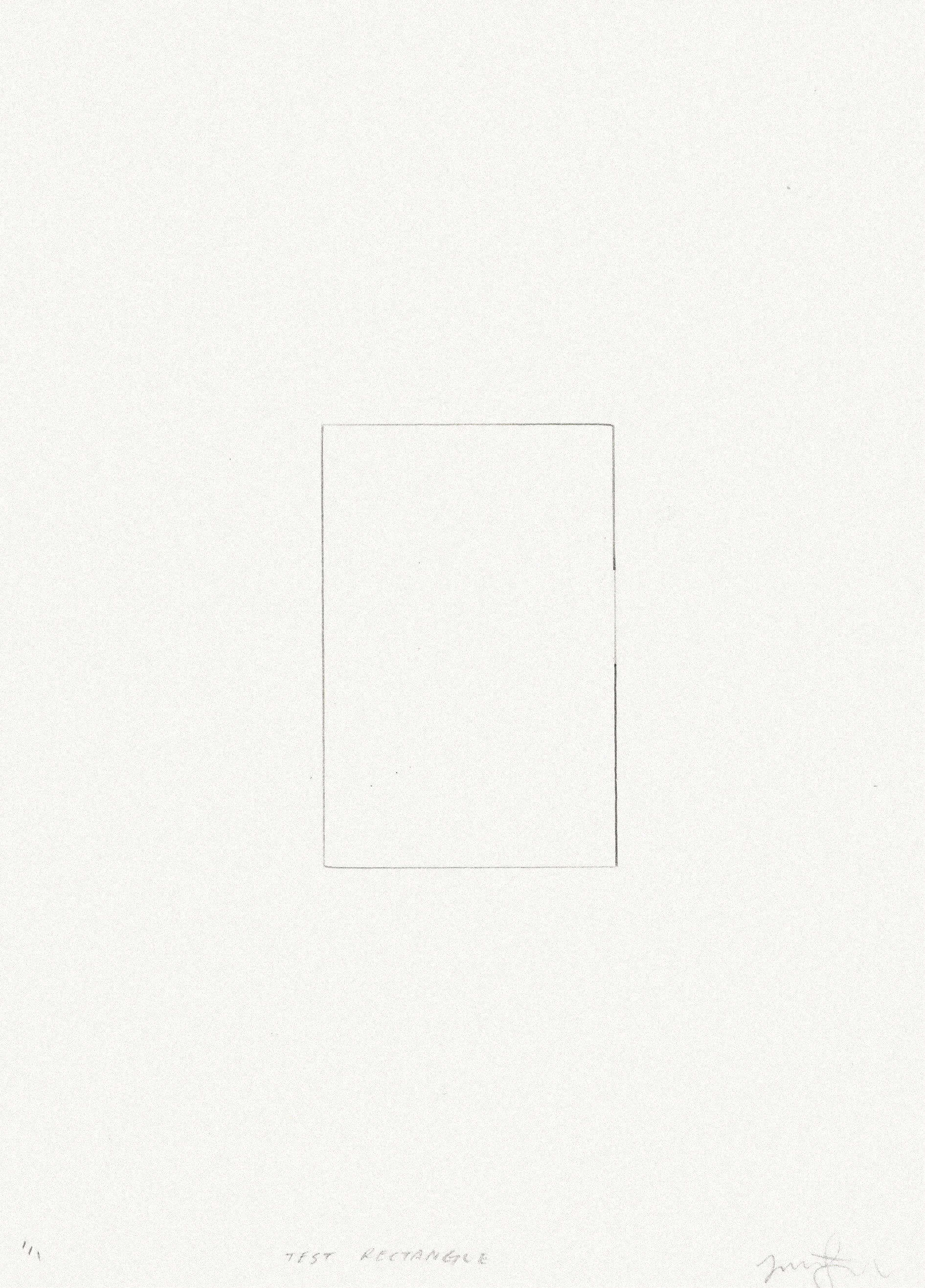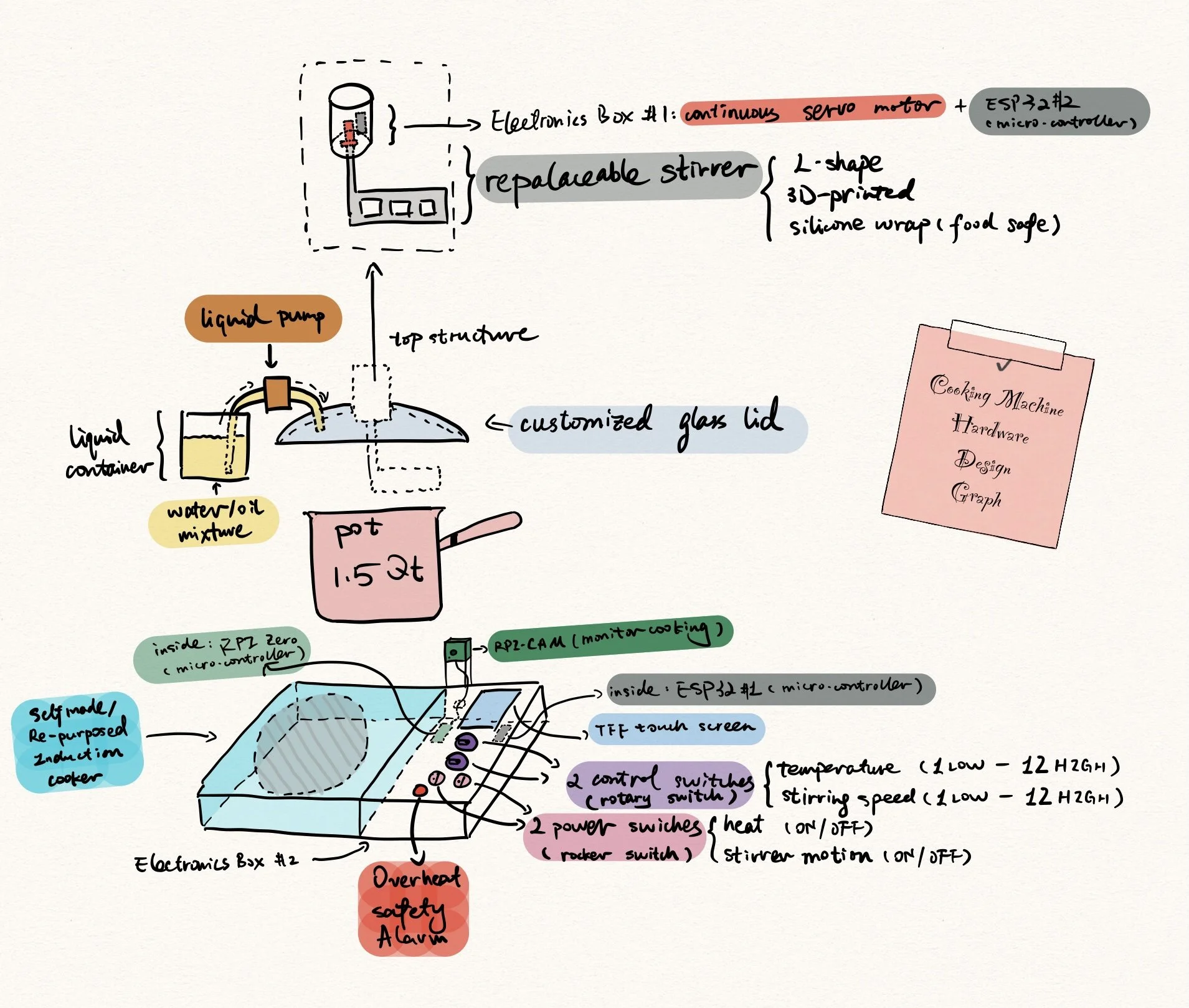beyond extraction
Araucanía and antofogasta’s geological narratives
in daily memoriam
Call and Response - Choices
How do patterns start? Where do they begin? Questions about Tiny-Z’s choices and exertion of machine choice
Automated Loom Part II: the computer’s beginning
If we broaden our historical lens and view multiple decades as a singular historical moment, the Jacquard loom has indeed become one of the most influential inventions in our modern history. This week, we will look at how a piece of weaving equipment directly inspired the first computer, changing the way humans navigate through the world.
Call and Response - Pairs II
Continuing to draw without lifting the pencil between strokes, it is exciting to see where the Tiny-Z goes first - the initial mark across the paper feels confident, not hesitant like the way it felt before when the pencil moved to just the right spot, then finally plunged onto the page. This movement builds momentum, the patterns that follow feel like I had nothing to do with them. The images here are another series of comparative drawings, which use at least one shared layer between the two drawings. By layering patterns and seeing hatches turning into paths, we test registration and mixing lines from a more extensive library into nearly infinite combinations.
Call and Response - Pairs I
Displayed side-by-side, these drawings compare lines drawn in CAD and the path taken by the Tiny-Z. The left side drawings are the more faithful executions of drawings I made in CAD. On the other hand, in the drawings on the right side of each pair, the Tiny-Z did not lift its pencil in between strokes, mapping its movement rather than drawing an image. Viewed side-by-side, these drawings show the machine transforming the hatches and grids on the left into something very different. By not lifting the pencil, the machine turns a series of discrete lines into a continuous pattern- rendering the lines lively, nearly textile.
A Cooking Machine – App Development
Learned about how Swift, an iPhone application coding language, and started the cooking machine app development.
Call and Response - Communication
The two-sidedness of communication was the most rewarding part of drawing with the Tiny-Z. Figuring out how it alters or interprets inputs (in the form of accidents or errors) is another thing that can act as a metaphor beyond this drawing experiment, where physicality and materiality meets planning. Lines interpreted by machine and drawn on a page are not so different than plans read by builders and constructed.
Call and Response - Accidents
We define accidents as things that are unexpected or happen by chance- and at first glance, it seems like drawing with this instrument is full of them. When it only moves in one direction instead of diagonally along two axes at once, the lines pair up together, every other one spaced differently than how it is drawn in the computer, and the instrument is unaware of this miscalculation of space. Or, the lead breaks when the pencil is lowered along the z-axis, or it lightens as the tip is dulled over the course of a drawing - the instrument doesn’t realize these things either.
Call and Response - Procedure
Still, there is an unseen middle phase in the process of most human things. Francesca Hughes likens the struggle between ideas and matter in buildings to the hesitance for artists, scientists, and philosophers to draw embryonic development in the 14th and 15th centuries.
Likewise in architecture, there is an “awkward generation of drawings that immediately follows the concept sketch, the not-yet buildings and the buildings-to-be––the drawings we are never shown[…], or the drawings that are too ugly to draw” (Hughes).
Call and Response - Error and Precision
Error is good, and precision is a technical myth.
From the hatch tests we drew last week, it is clear that this instrument is most precise when both the X and Y axes are moving together. Diagonal lines, in this case at a 45 degree angle, are drawn on paper with the greatest fidelity to the coded input drawn in CAD space. This makes me think that this instrument and I have some similarities, gravitating towards drawings created in the plan oblique, or axonometric projections.
Call and Response - Fidelity
The fidelity between the drawing and coded input is one of the ways this instrument influences our collaboration
Call and Response - Lines
I spent two weeks in the winter building a small machine.
It is a machine with three motors, three drive screw rotary axes, and a motion controller – it is most simply something that can move precisely in three dimensions and is controlled by numbers.
A Cooking Machine - Initial App Interface Design Visualization & Software tool
How will my “Cooking Robot” iPhone app control my cooking machine? Check out this post to see my initial app interface ideas.
A Cooking Machine - Initial Hardware Components Selection
Do you want to learn about the parts that make up the design of my cooking machine? Check out the details of the initial hardware design and components selection!
A Cooking Machine – Alternative Dishes & Hardware/Software Modification
What other savory Chinese dishes might this cooking machine cook? How might these dishes impact the cooking machine design (hardware & software)?
A Cooking Machine – Demo Dish Choices & Smart Features
Enjoy the journey of cooking One Pot Tomato and Chickpea with me! Learn about how this dish informs the design (hardware & software) of the cooking machine!
A Cooking Machine - Research & Design
See how I’ve started thinking about the design of my own cooking machine/robot that can make delicious Chinese food with minimal effort!
Design for Repurposing
Around the world, valuable natural resources are running out. As a result, more and more designers are looking into ways to repurpose waste or abundant resources into more sustainable materials..
Designing with Smart Materials
With the advance in technology, we now have more intelligent and futuristic composites to choose from. Can smart materials affect the design field positively?
To Be Automated: Finishing
Learning from union metalworkers to automate mirror polishing in Kansas City.

























